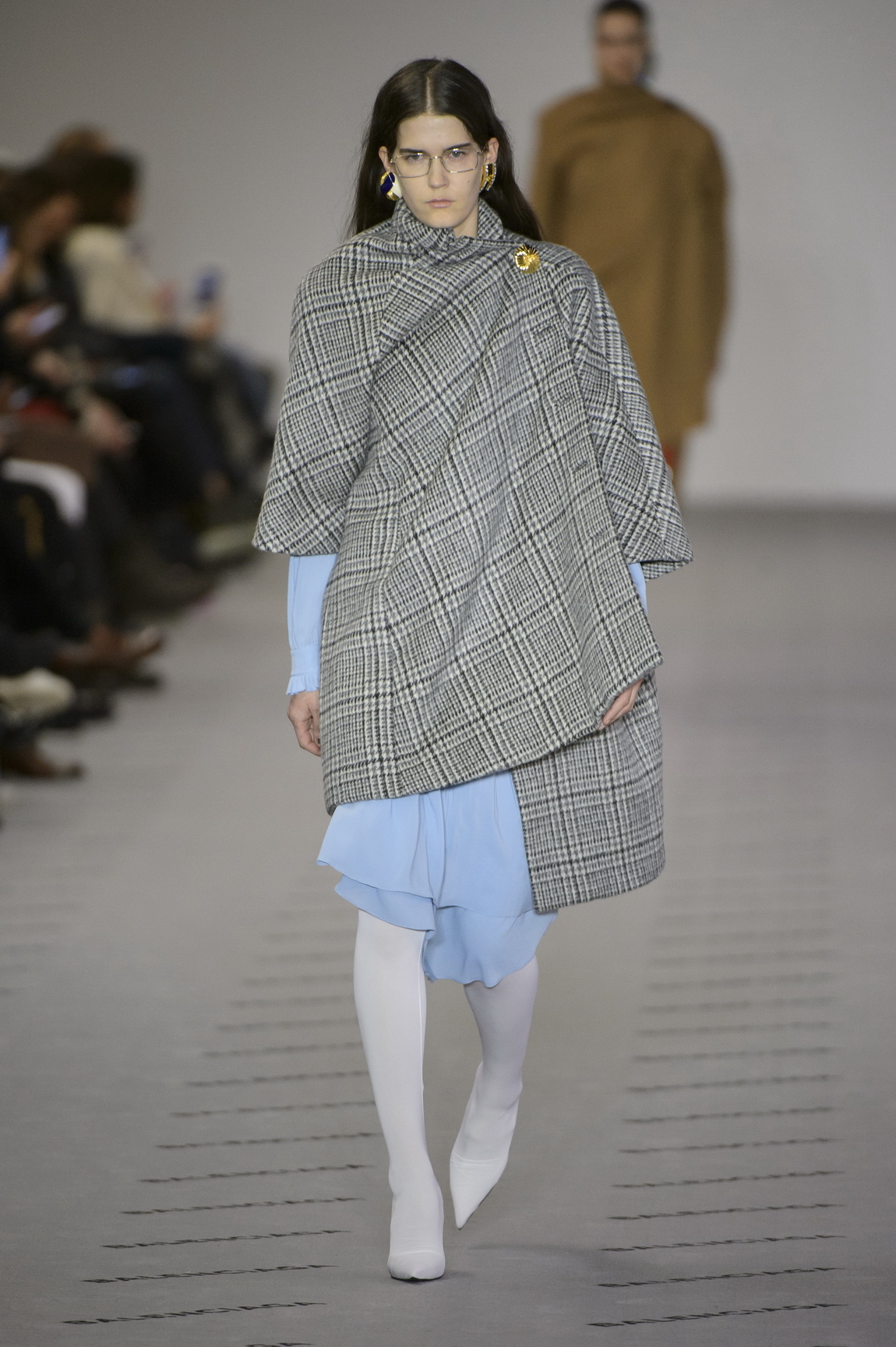It’s been over a year since Raf Simons quit his job at Dior citing too much work and too little time. His move made the industry think about its own ridiculous pace, but in the end fashion didn’t have the attention span to actually fix these issues. The irony! So here we are, going faster than ever before, making designers churn out more collections, more events, and more special projects to quench our insatiable thirst for the new. Stuck on the spinning wheel, designers are forced to react the only way they can: through their craft. It’s generated a new appreciation for artisanal value expressed in an haute couture approach to fashion. In London this season, Erdem showed a collection virtually comprised of evening gowns, leaving his more selling pieces to the shop floor. At Burberry, Christopher Bailey may have turned to see-now-buy-now, but he couldn’t resist whipping up 80 couture capes for his show finale. Alessandro Michele embroidered the lining of garments—what else do you need to know! And at Maison Margiela, John Galliano trickled the themes and techniques from January’s haute couture collection down to his ready-to-wear, effectively making the brand’s commercial output reliant on his haute couture. Demna Gvasalia has become increasingly infatuated with the artisanal aspect of his work since joining Balenciaga in 2015 and moving his Vetements show to the haute couture schedule as of last year.
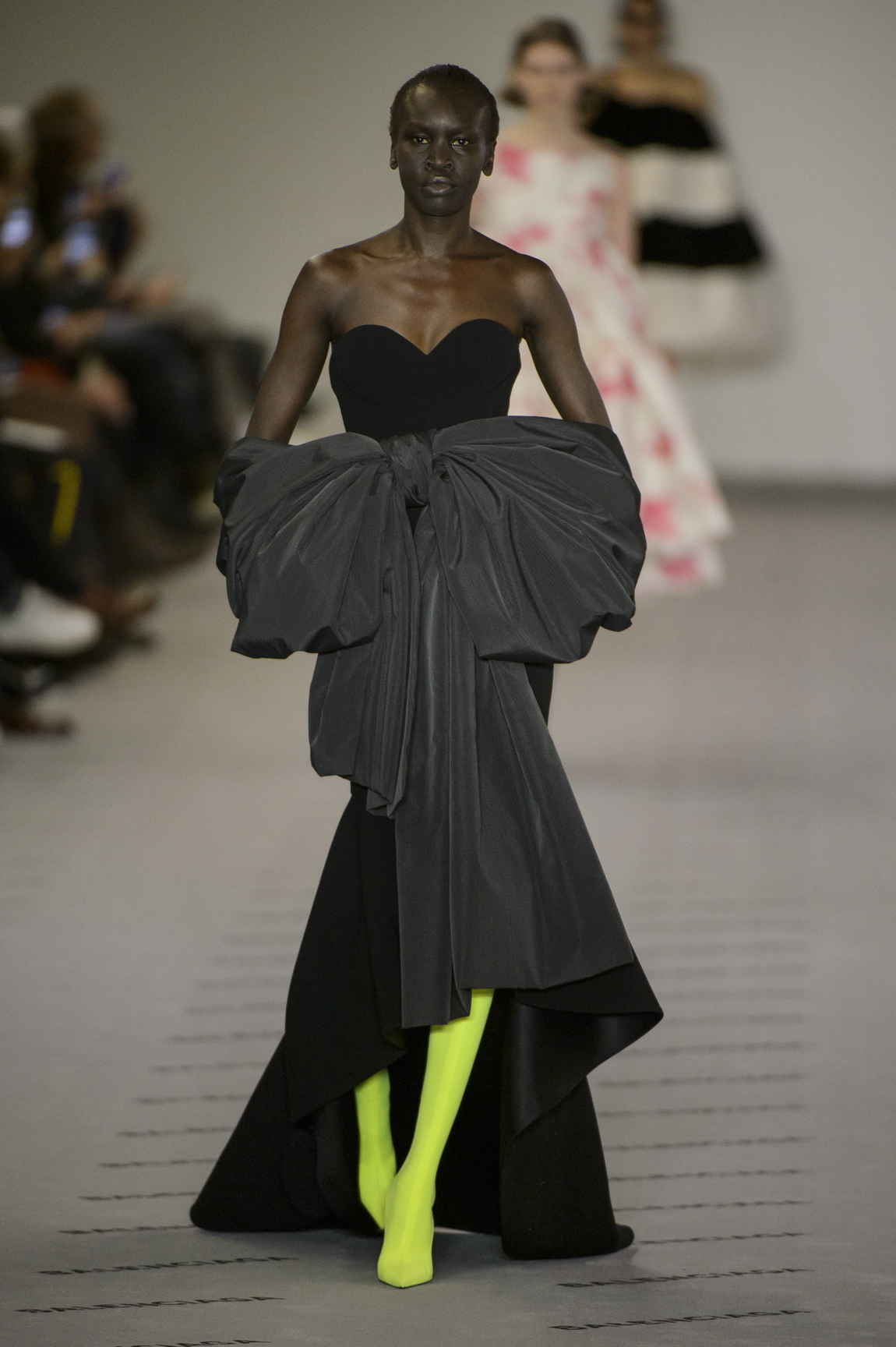
For a 36-year-old designer, who was catapulted into fashion fame in record time and now designs six collections a year, the attraction to haute couture and its slowed-down ways are comprehensible. He marked this year’s 100th anniversary of Balenciaga with nine haute couture dresses that closed his fall/winter 17 show on Sunday in Paris, but you got the feeling he didn’t need a reason. In fact, the slow-paced fashion system of Balenciaga’s beginnings framed the whole collection, presented in what felt like a vast car park covered in a massive grey Balenciaga logo rug. “It’s how I always work: wearing the clothes inspires new clothes, so I found these images from Cristóbal’s look books that I hadn’t seen before,” Demna said, referring to Cristóbal Balenciaga, “where the women holding coats hold them this way, with numbers,” he gestured, swinging his wrist over his shoulder. “And I thought that was the gesture I wanted to study this season, which equalled elegance to me but also had something quite cool. Those two words are a kind of fusion of what I do at Balenciaga.” He was sounding more like a couturier of yesteryear than a designer megastar of the social media age, and you couldn’t help but picture him as a little boy in Abkhazia staging fashion shows comprised of his grandmother’s cut-up negligees with his younger brother Guram — now the CEO of Vetements — who’d sell tickets to the family and make sure profits were made.
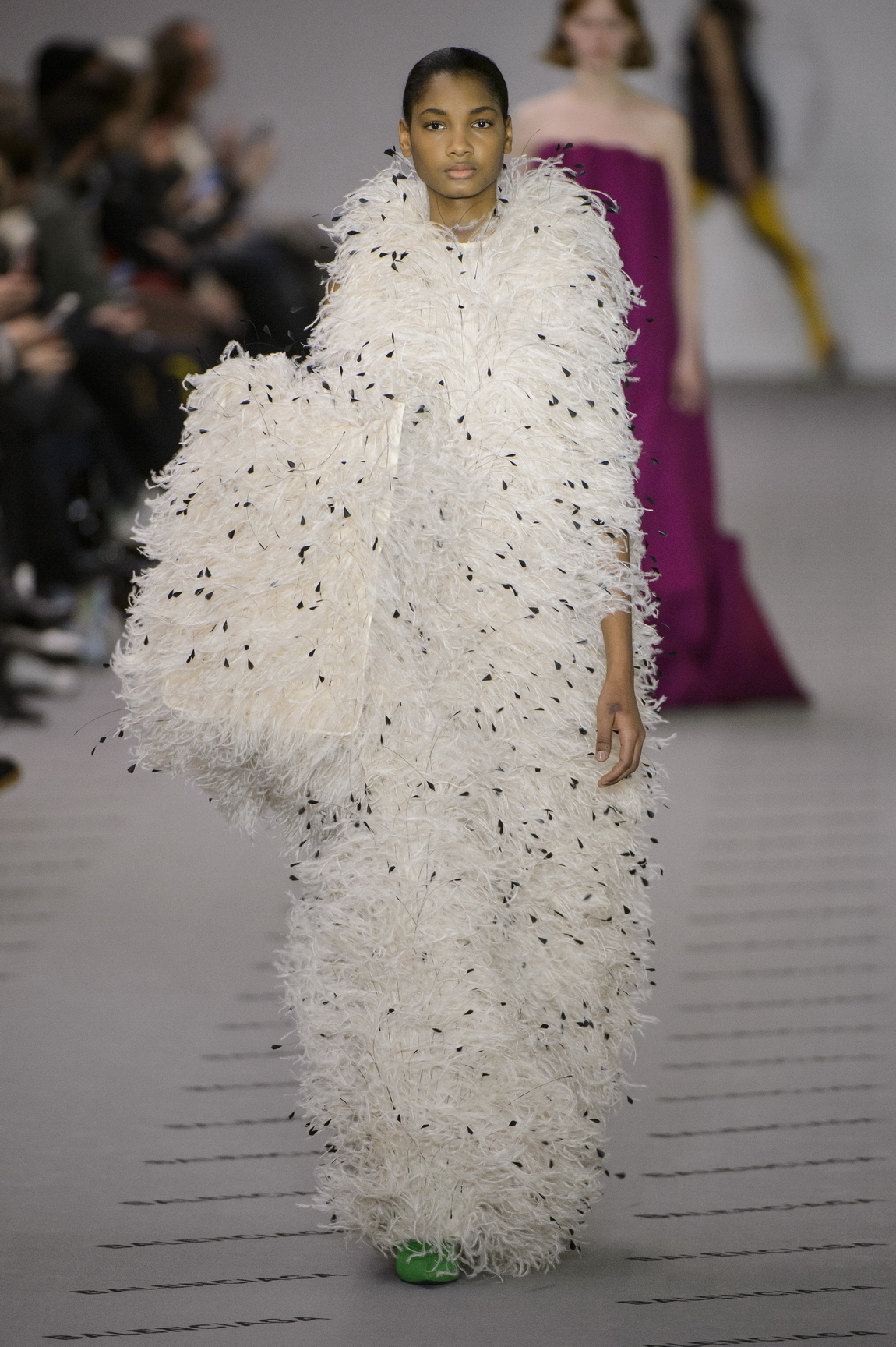
Before Demna was the coolest, most subversive designer in Paris, he was a boy in a province of communist Georgia, who dreamt of haute couture. And he’s got the craft for it. “I took those ideal dresses from Cristóbal,” he explained of the gowns that closed the show, “and I started twisting them in every possible direction, but it was too much, I thought. So I decided to stay pure to what these dresses were before. None of them exist in our archives today, so we really worked them from scratch: the volume, the fabric, everything.” Then he added trademark upside-down Demna elements to them, giving the gowns practical pockets or making them in the fabric he normally uses for parkas. It wasn’t an haute-couture collection. On the contrary, the majority of the looks he showed before those gowns came out were throbbing with the commercial streetwear appeal and tailoring he needs in order to keep the Balenciaga ship afloat. But there was no way those gowns wouldn’t steal the show, and while they won’t go into production — you can order one if you’re feeling flush — it was amazing to see Demna trying his hand at the haute couture dream, a kind of fashion in slow-paced contrast to the selling machine that’s otherwise his life. “It’s a hundred years,” he said, reminding us of Balenciaga’s anniversary, “and this is the year where couture could be available at Balenciaga again.” Was Demna hinting at a future revival of the house’s haute couture line? You might say that would only add to his workload, but boy would it make him a happy trooper.
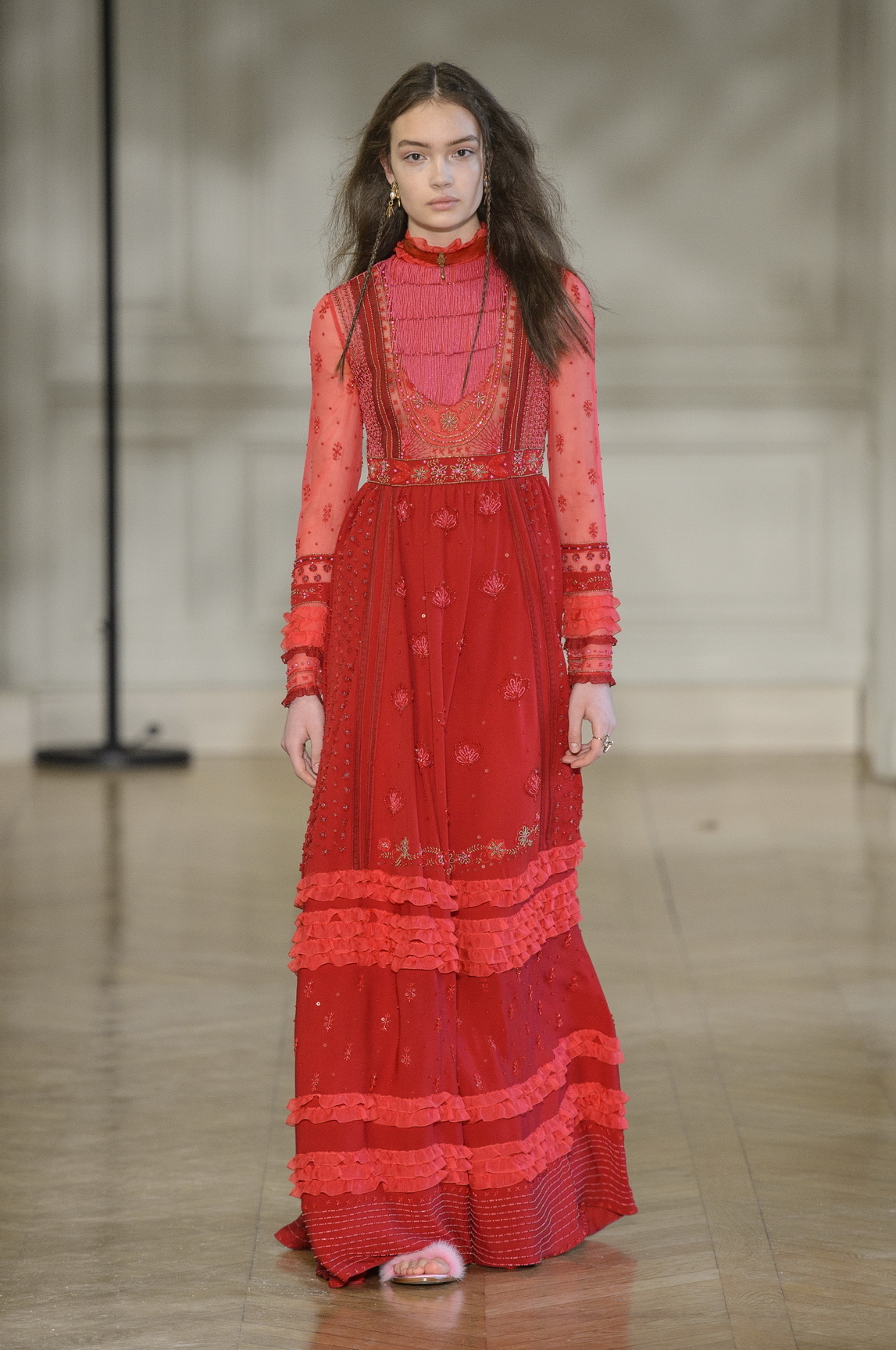
Pierpaolo Piccioli gets to do ready-to-wear and haute couture for Valentino, and his views on artisanal dressmaking are refreshing. “My whole job at this house is about individuality and evaluating diversity,” he said in one of our interviews last year. “Couture talks about a one-of-a-kind uniqueness, and so giving couture a different perspective is about evaluating these values. It’s not about something that still belongs to a beautiful past. It’s about valuing diversity, and in this moment I think it’s super important to talk about diversity as beauty.” He’ll tell you he doesn’t feel the pressures of an overworked industry, but his ready-to-wear collection on Sunday afternoon did tackle fashion’s never-ending pursuit of the new. “I started this collection thinking, what is new? And I thought, nothing is new, actually. What’s new are the new connections, new perspectives, and not to have preconceived ideas, because nothing can be really new, apart from your way of facing and life,” Pierpaolo said backstage, typically articulate and composed as if the 61-look collection he’d just shown was simply another day on the job. He gets to feel like that not just because he lives in a small Italian coastal town away from the fast-paced fashion circus, but because he chooses to approach his work at Valentino with sense and sensibility. Ignoring the race for the new, Pierpaolo slowly and gracefully builds on the time-traveling fantasy world he’s created at the house, fusing eras and art worlds in his signature silhouette. His references are as intricate as the craftsmanship with which he executes his collections, and it’s a way of working that often makes his ready-to-wear shows feel like you’re looking at haute couture.

This was the case on Sunday afternoon in the celestial surroundings of Hotel Salomon de Rothschild where Pierpaolo played the beautiful score from Lion and showed a collection that connected the romanticism of the Victorian age with the Memphis Group, two of the founders of which — Nathalie du Pasquier and George Sowden — he’d invited to collaborate on the collection. “Not with their work from the past,” he noted. “I wanted to get their contemporary thoughts.” To Pierpaolo, the Memphis Group’s integration of art forms across cultures represented his philosophy on fashion. “They were open-minded to new perspectives; great artists for democracy.” His models wore earrings with the date of the show — a reflection of the passing of time key to a designer’s work. If ready-to-wear represents disposability and seasonal change, haute couture is forever. And the fashion industry would be wise to look to Pierpaolo’s interpretation of that philosophy in his ready-to-wear. “I could go on for hours,” he said, interrupting his own stream of collection references and beliefs, and sitting in that show you wished it could have gone on for days. It can’t be stated enough: his Valentino shows fill you with a kind of emotion and elation you don’t easily find in fashion, and it’s rooted in this designer’s pragmatic but poetic approach. Also, that leather dress in look 42: Heaven!

At Céline, Phoebe Philo spun us right round in a mechanical installation set by artist Philippe Parreno, which had guests rotating on enormous platforms as the looks made their way around the Tennis Club. Philo wasn’t in the mood for backstage interviews, but minimal show notes explained her collection was a “story-telling design process of how a collection is created and the notion of how changes result in impact.” Like Valentino, the sentiment at Céline was a protest against the new-for-the-sake-of-new attitude of fashion. Philo continued her steady mission to create a sensible, expertly designed wardrobe that women want to wear, and in her unfussy approach she succeeded. Oversized tailoring and duster coats hit the nail on the head — this was great daywear, the really desirable way. Céline doesn’t dream of haute couture but in its slowed-down point of view it certainly cemented Sunday’s spirit here in Paris.
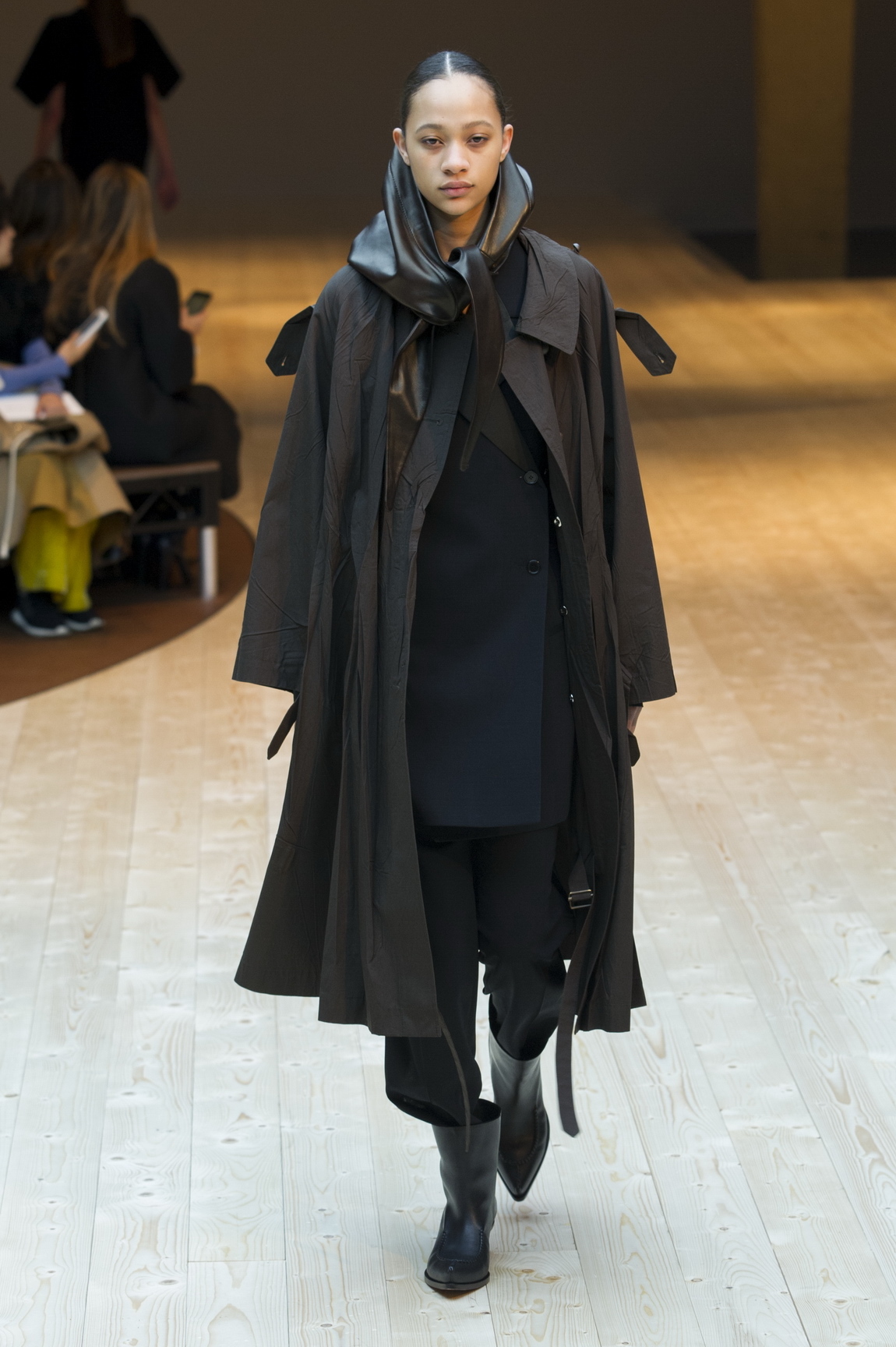
Read: From New York to London to Milan to Paris, check out all of i-D’s fall/winter 17 show coverage now.
Credits
Text Anders Christian Madsen
Photography Mitchell Sams
